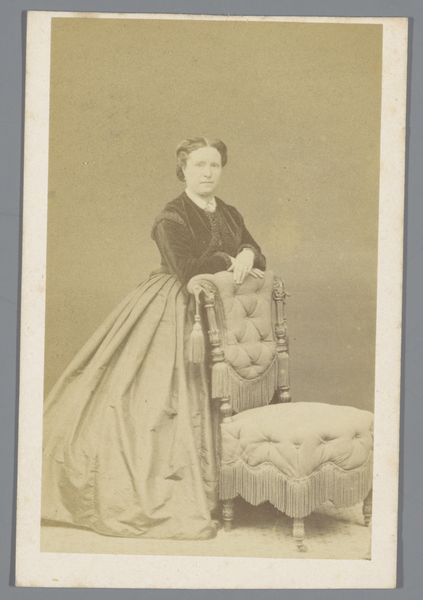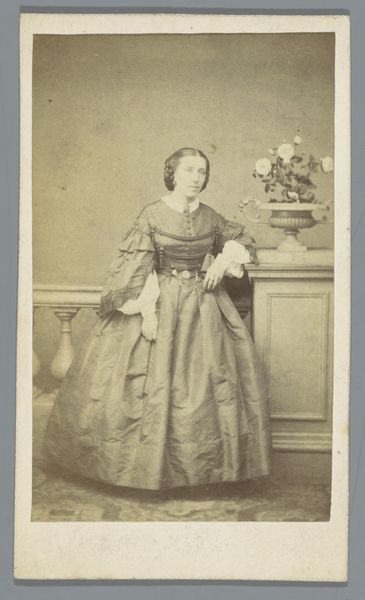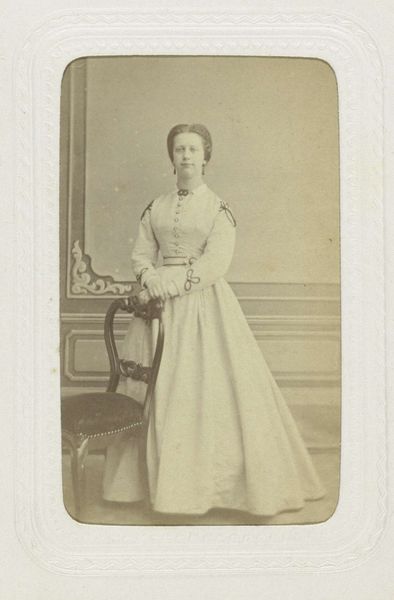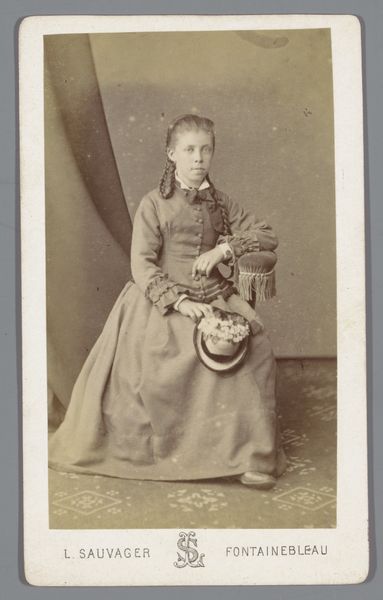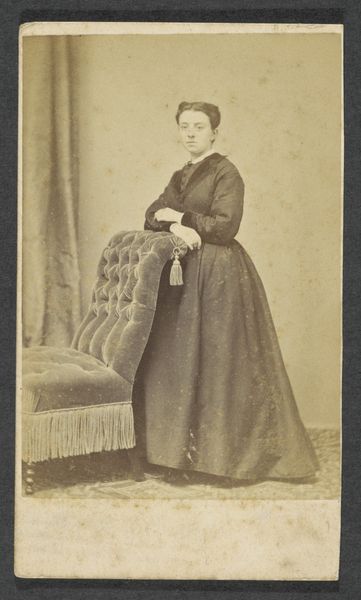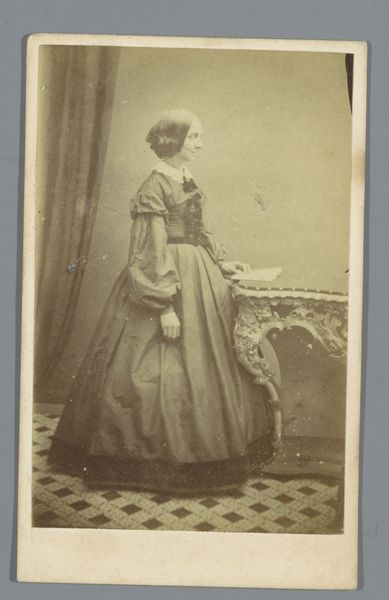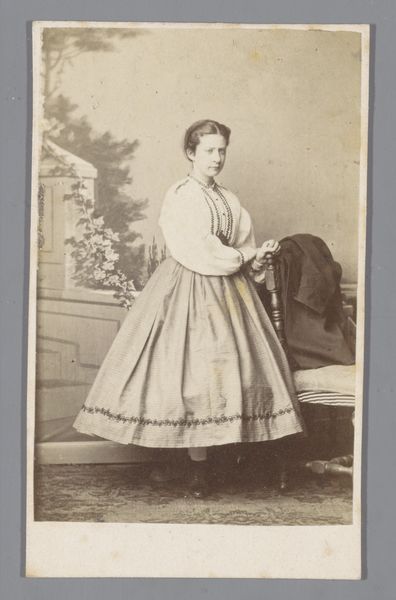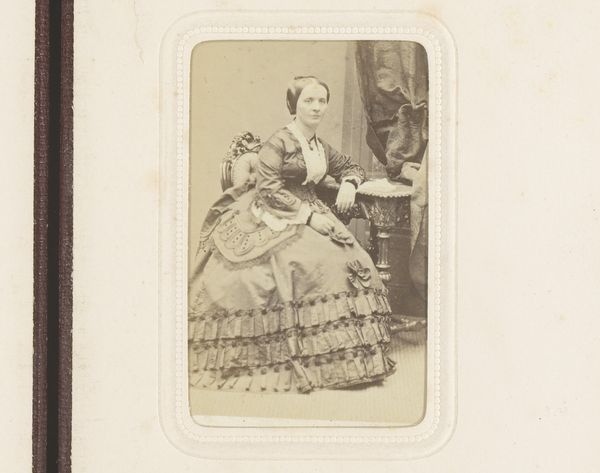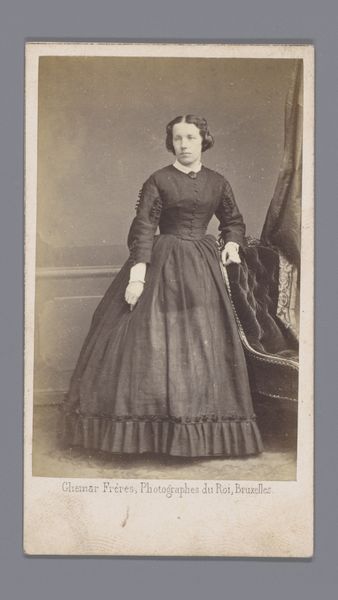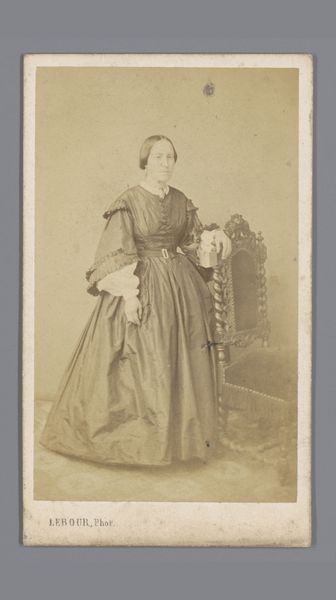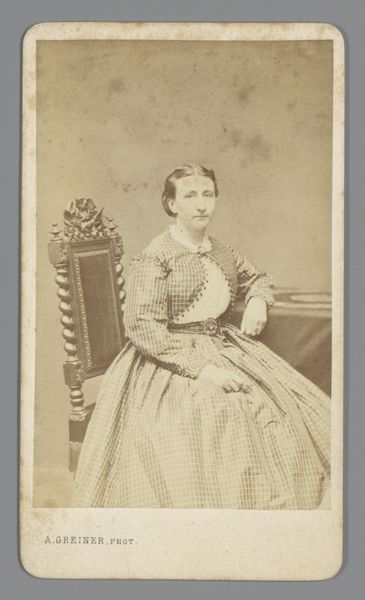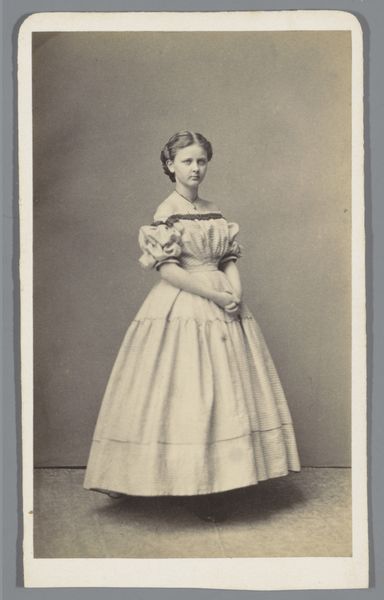
photography, gelatin-silver-print
#
portrait
#
photography
#
gelatin-silver-print
Dimensions: height 103 mm, width 64 mm
Copyright: Rijks Museum: Open Domain
The Kerremans brothers created this portrait of an unknown woman in the Netherlands using the 19th-century carte-de-visite photographic technique. It’s a fascinating example of the democratization of portraiture brought about by photography. Before, painted portraits were exclusive to the wealthy elite, reinforcing their social status. The carte-de-visite, however, made images accessible to a wider middle class, yet it still performed a function of class aspiration. The woman's dress, her pose, and even the ornate chair—likely a studio prop—all speak to a desire to present a respectable image. The subtle hand-coloring adds another layer of sophistication, mimicking the look of more expensive painted portraits. To fully understand this image, we can delve into archives of photographic studios and study fashion plates of the era. By doing so, we can gain valuable insight into the aspirations and social codes of the time.
Comments
No comments
Be the first to comment and join the conversation on the ultimate creative platform.
